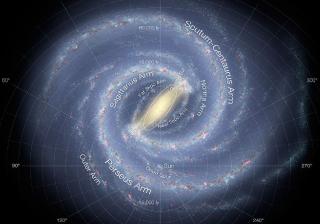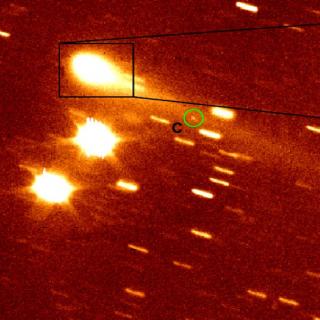Bibcode
Moreno, F.; Licandro, J.; Tozzi, G.-P.; Ortiz, J. L.; Cabrera-Lavers, A.; Augusteijn, T.; Liimets, T.; Lindberg, J. E.; Pursimo, T.; Rodríguez-Gil, P.; Vaduvescu, O.
Bibliographical reference
The Astrophysical Journal Letters, Volume 718, Issue 2, pp. L132-L136 (2010).
Advertised on:
8
2010
Citations
27
Refereed citations
26
Description
The dust ejecta of Main-Belt Comet P/2010 A2 (LINEAR) have been observed
with several telescopes at the Observatorio del Roque de los Muchachos
on La Palma, Spain. Application of an inverse dust tail Monte Carlo
method to the images of the dust ejecta from the object indicates that a
sustained, likely water-ice-driven, activity over some eight months is
the mechanism responsible for the formation of the observed tail. The
total amount of the dust released is estimated to be 5 ×
107 kg, which represents about 0.3% of the nucleus mass.
While the event could have been triggered by a collision, this cannot be
determined from the currently available data.
Related projects

Morphology and dynamics of the Milky Way
This project consists of two parts, each differentiated but both complementary: morphology and dynamics. Detailed study of the morphology of the Milky Way pretends to provide a data base for the stellar distribution in the most remote and heavily obscured regions of our Galaxy, through the development of semiempirical models based on the
Martín
López Corredoira

Small Bodies of the Solar System
This project studies the physical and compositional properties of the so-called minor bodies of the Solar System, that includes asteroids, icy objects, and comets. Of special interest are the trans-neptunian objects (TNOs), including those considered the most distant objects detected so far (Extreme-TNOs or ETNOs); the comets and the comet-asteroid
Julia de
León Cruz